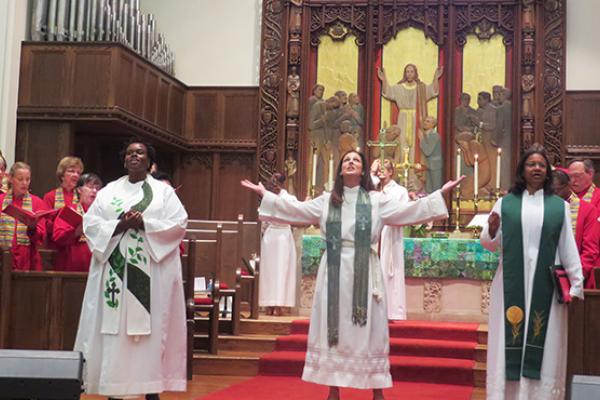Until recently, national data on the clergy pay gap was unavailable or unreliable, in part because of the relatively few numbers of women clergy.
But in January, I reported on data from the Bureau of Labor Statistics that found women clergy receive 76 cents for each dollar paid to their male counterparts. Specifically, the bureau reported that in 2014 male clergy earned $1,007 per week — female clergy earned only $763. This is a $12,000 difference in annual earnings.
New data from the BLS and the Census confirms that there is a gap in pay. However, it has tightened, with women now receiving 90 cents for each dollar paid to men.
Data from 2015 now shows earnings by male clergy were virtually unchanged ($1,021), but the median earnings by women rose to $924.
But it’s unlikely that female clergy actually experienced a 21 percent raise in pay.
The change reflects the sensitivity of the estimates caused by the relatively few female clergy in the data. There are enough to make a report, but there is less stability in the figures than for other groups.
The 2015 BLS numbers are consistent with data from the 2014 U.S. Census American Community Study.
I analyzed the 3,997 clergy in the ACS survey. The average yearly income for male clergy was $44,164. For women, the average was only $38,533.
Because women are more likely to have skewed toward lower incomes, the pay gap is larger when comparing average (mean) incomes and median incomes. Using median incomes, women received 93 cents per dollar paid to men. For mean income, the figure is 87 cents.
Perhaps the most surprising finding is that the pay gap does not diminish (and may grow wider) when we take into account education and experience. Women in the clergy tend to be better-educated than their male colleagues. As a result, when we take into account age, years of schooling, and having a theology degree, the number becomes 85 cents.
In other words, female clergy really do earn less for the same education and experience.
Bottom line: There is a gender pay gap among clergy that is not explained by education or experience. The amount is narrower than first reported but remains between 85 and 90 cents for each dollar that male clergy earn.
Note: In analyzing the American Community Study, I used only full-time clergy. These are clergy who worked at least 35 hours a week for 50 to 52 weeks a year. Some are full-time volunteers (earning zero despite working full time). Eliminating these workers had no effect on the earning differences between men and women.
Got something to say about what you're reading? We value your feedback!
